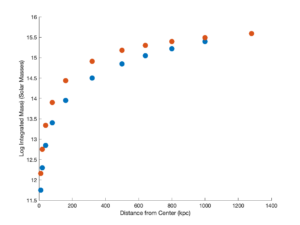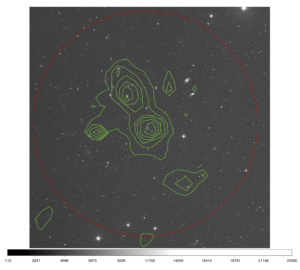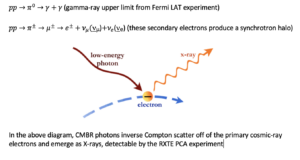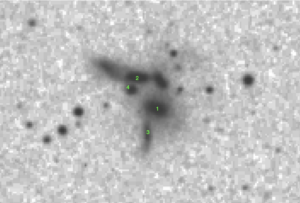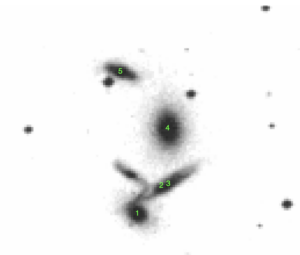Searching the Cosmos for a Direct Detection of Dark Matter
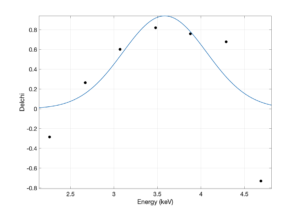
This is a Gaussian fit to residuals in the range of 2.3 – 4.7 keV obtained from modeling 3 million seconds of galaxy cluster observations in the Rossi X-ray Timing Explorer archive. The best fit center for the Gaussian line profile is 3.58 keV, remarkable close to 3.55 keV, the energy of the hypothesized sterile neutrino decay. Almost all other constraints on this line have been obtained with CCD detectors – on XMM, Chandra, and Suzaku – while RXTE used an array of layered gas proportional counters. While this provides an alternative to the systematics of CCD detectors, T\the relatively low resolution of the proportion counter means that there are possible sources of contamination such as weak lines and perhaps the WHIM.
The Complex Structure of the Abell 548–Abell 3367 Region

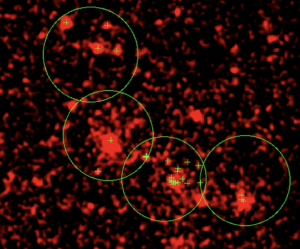
Analyzing WiseA IR data (L) identified with galaxies, and XMM/ROSAT X-ray data (R) associated with Intergalactic gas, we find that Abell 548 and Abell 3667 form a supercluster, at z~0.045 with an unrelated the higher-redshift X-Ray in the background. They are part of a larger structure consisting of a previously identified cluster at redshift 0.04 and two groups of galaxies at redshift ~0.06. There is also a filamentary structure at z ~0.103. The ubiquity of groups in the large-scale structure suggests that they provide an environment where galaxies are in close proximity and evolution via interaction can proceed well before the galaxies make their way into the dense central region of a cluster.
Machine Learning Aids in Exploiting Disequilbrium to Follow the Dark Matter in Cluster Evolution
On the left is a 3 dimensional data consisting of the galaxy positions and velocities in the non-equilibrium galaxy cluster, Abell 2146. Optimized K-means clustering assigns the galaxies into 4 substructures. The derived mass profile, which is dominated by dark matter, is shown on the right in blue. In red is the NFW profile, which characterizes clusters that have reached equilibrium. The pre-equilibrium profile is less centrally concentrated than the NFW. The implication is that as the gravitational potential well depens during infall, mass is still being accreted at a high enough rate to keep the overall profile flatter. Near equilibrium, the accretion rate slows down and the profile reaches the NFW profile.
Dark X-ray Galaxies: A New Class of Objects
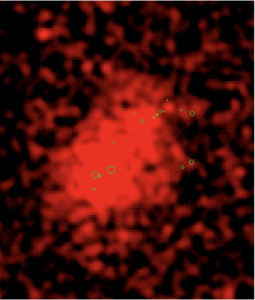
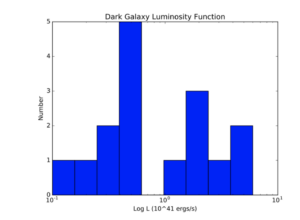
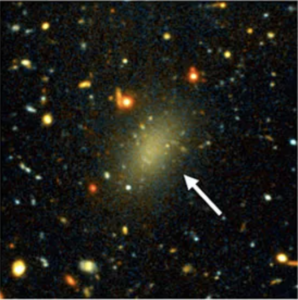
We found a new class of objects: dark X-ray galaxies (DXGs) in the Abell 1367 galaxy cluster. This result is in the Astrophysical Journal (Letters) and reviewed in Nature. These galaxies lack star formation, yet are bright in diffuse X-ray as observed with XMM. The figure on the left shows their distribution (green circles) on the cluster intergalactic medium (red) (IGM). In the paper, I argue they are disk galaxies that have had their cold, star forming gas removed, which is then replaced by the hot surrounding IGM. They have a significant amount of dark matter, which traps the hot gas. This is shown in the luminosity function (middle figure) for the DXGs, which have comparable masses to spiral galaxies. I first noticed these galaxies 3 decades ago after using a wavelet analysis on ROSAT data of the Abell 1367 cluster. My interpretation changed as to their origin since that time, in part due to the discovery of optical analogues such as the dragonfly galaxy (right) as observed with the Hubble Space telescope.
The First Experimental Determination of the Energy in Cosmic-ray Protons to Cosmic-ray Electrons
This figure shows the Abell 1750 X-ray contours, which map the hot intracluster medium contained in the field of view of the Rossi X-ray Timing Explorer (red circle). The data is from a NASA proposal for a 200 ksec observation to search for emission from the inverse-Compton effect at the merger interface between two clusters. I used this result with the upper limits on gamma-ray emission observed with Fermi LAT to make the first observationally based determination of the relative energy that goes into cosmic ray electrons and protons is merger shocks. This result is in a paper published in the Astrophysical Journal. There is the potential for the neutrinos produced by muon decay to be detected by the IceCube Neutrino Observatory.
The Origin of Intergalactic Light in Groups
HCG 79 (left) contains 2 lenticular galaxies, 3 spiral galaxies (one barred spiral) and a tidal tail. There is diffuse InterGalactic Light (IGL), visible optically, that has not been explored either observationally or theoretically. The numbers are locations of unresolved X-ray sources that may be due to ULXRBs (Ultra luminous X-ray binaries) or AGN (Active Galactic Nuclei). These X-ray sources are indicative of galaxy interaction and linked to the diffuse optical light. HCG 40 (right) shows multiple bright X-ray sources in one galaxy; one nuclear and one in the disk. The disk sources are ULXRBs. In our paper, we compare groups with IGL to those without IGL and discuss the differences and the implications for this putative pre-merger stage.

